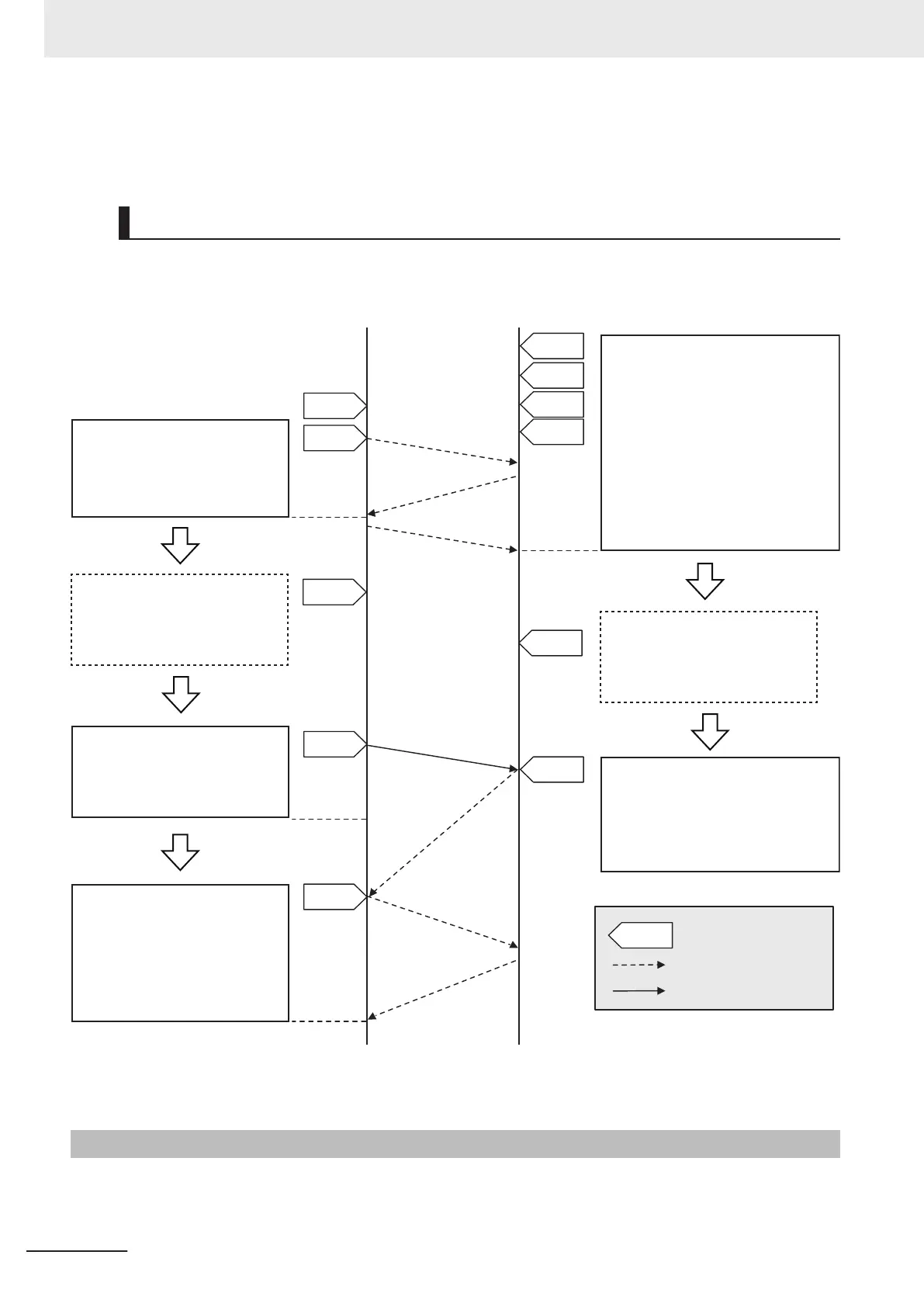without closing the socket.
built-in EtherNet/IP port.
Socket interface
Packets sent by higher layers
Packets sent by the TCP/IP layer
Socket
FIN
ACK
ACK
ACK
SYN ACK
SYN
Send
Close
Connect
Socket
Bind
Listen
Accept
Recv
Client Server
SktTCPAccept Instruction
• Execution of Socket Functions
Socket(), Bind(), Listen(), and
Accept()
• Timeout monitoring until Connect is
completed
The connection is established by the
normal completion of the SktTCPAc
-
cept instruction.
SktTCPRcv Instruction
• Execution of Socket Function Recv()
• Timeout monitoring until data is
received from the remote node
Writing the received data to the variable
is completed by the normal completion
of the SktTCPRcv instruction.
SktTCPConnect Instruction
• Execution of the Socket Function
Connect()
The connection is established by
the normal completion of the
SktTCPConnect instruction.
SktTCPSend Instruction
• Execution of the Socket Function
Send()
The data is stored in the send
buffer by the normal completion of
the SktTCPSend instruction.
Instruction
completed.
Instruction
completed.
Instruction
completed.
Instruction
completed.
SktClose Instruction
• Execution of the Socket Function
Close()
The acknowledgment (ACK) of
FIN from the remote node is
received by the normal comple
-
tion of the SktClose instruction.
However, RST (not FIN) is sent if
the Linger Option is specified.
Setopt
SktSetOption Instruction
• Execution of the Socket Function
setsoketopt()
The option for TCP socket is set
by the normal completion of the
SktSetOption instruction. (Note)
SktSetOption Instruction
• Execution of the Socket Function
setsoketopt()
The option for TCP socket is set
by the normal completion of the
SktSetOption instruction. (Note)
Setopt
The receive buffer for the built-in EtherNet/IP port is a maximum of 9,000 bytes per socket handle. If
any data that is larger than 9,000 bytes is received, the data is discarded.

